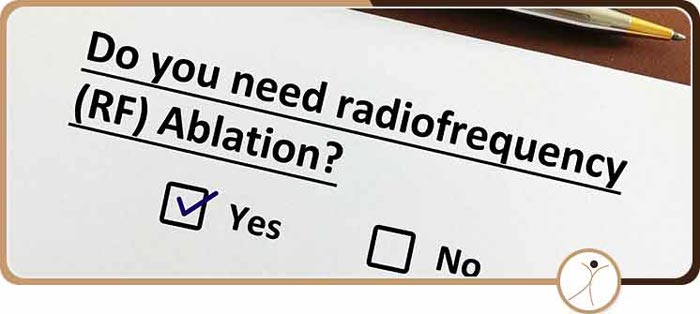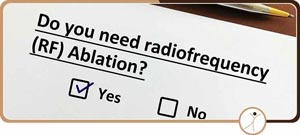Radiofrequency Ablation (RFA) Treatment for Pain Q&A
Are you suffering from neck, mid back, or lower back pain and noticed nothing is helping with the nerve pain you are suffering from? Contact Dr. Atallah, DO at Modern Pain Management today! Our Radiofrequency Ablation treatment may be what you need! We have convenient locations to serve you in Houston TX and Sugar Land TX. For more information, please contact us or book an appointment online.




Table of Contents:
What is radiofrequency ablation?
How long does a radiofrequency ablation procedure take?
How long does radiofrequency ablation take to work?
Does radiofrequency ablation work for spinal stenosis?
Radiofrequency ablation also known as RFA is a minimally invasive procedure that is performed at a doctor’s office like Modern Pain Management or a hospital. It is a procedure to help to reduce pain. An electrical current produced by a radio wave is used to heat up a small area of the nerve tissue, thereby decreasing pain signals from the specific area. Patients usually return home the same day after a radiofrequency ablation.
Radiofrequency ablation can be used to help patients with chronic (long-lasting) low-back and neck pain and pain which is related to the degeneration of joints from arthritis.
Radiofrequency ablation procedure usually takes anywhere from 30 to 90 minutes to complete. It is recommended you have someone available to drive you home after the procedure.
A few precautions that are taken for radiofrequency ablation procedure, is it may or may not be performed under mild sedation. The doctors will go over this with you as each individual if different. Radiofrequency ablation involves the following:
• Patient lies on their stomach on a procedure table. If sedation is being used, an intravenous (IV) line will be started to help relax
• The skin over the treatment area (like the neck, mid-back or low back) is cleaned to help minimize any risk of infection
• Physician numbs the area of skin being treated by injecting a numbing agent (anesthetic) into the region where the radiofrequency ablation injection site will be
• The physician will use an x-ray to guide the radiofrequency ablation needle towards the medial or lateral branch nerves
• Once placed, the active electrode is inserted through the needle and a small amount of electrical current is carefully passed next to the nerve
• Once the target nerve is confirmed, a heat lesion is created on the nerve
• This process may be repeated for any additional nerves
Each individual who has received the radiofrequency ablation procedure may have different timed results after. Usually, it can take three or more weeks for the full effects of the radiofrequency ablation procedure to be felt. The pain relief normally lasts anywhere from six months to a year or even longer.
Side effects include soreness around the injection site after the procedure.
Spinal stenosis is the narrowing of the space within your spine, which can put pressure on the surrounding nerves that travel through the spine. Spinal stenosis occurs most often in the lower back and neck.
Some patients may experience symptoms including pain, tingling, numbness, and muscle weakness.
Symptoms can worsen over time if treatment is not sought out.
Spinal stenosis is most commonly caused by use and changes within the spine related to osteoarthritis.
The types of spinal stenosis are based on where the spine condition occurs. It is possible to have more than one type. The two main types of spinal stenosis are:
• Cervical stenosis
Cervical stenosis is the narrowing that occurs in the part of the spine in your neck.
• Lumbar stenosis
Lumbar stenosis is the narrowing that occurs in the part of the spine in your lower back. This is one of the most common forms of spinal stenosis.
For nerve pain caused by spinal stenosis, radiofrequency ablation can be effective for as long as 12 months.
Modern Pain Management has 2 locations to serve you in Houston, TX, and Sugar Land, TX. Our Houston location is located at 902 Frostwood Drive, Suite 235, Houston, TX 77024
ADDITIONAL SERVICES YOU MAY NEED




